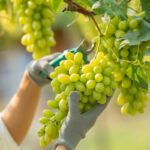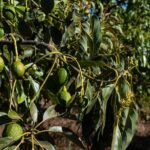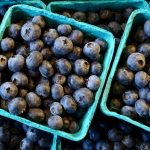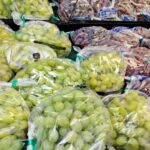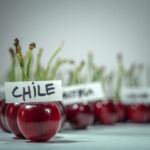Chile’s white strawberries on the brink

Chile’s white strawberries, native to the south central region of the country contain the genetic roots of the modern garden variety and elicit a certain fascination. But sadly, they are also on the verge of extinction.
A feature in Atlas Obscura explored the fate of these ping-pong sized berries. Today a dwindling count of aging farmers still cultivate these strawberries, which tend to turn a pale pink when ripening.
The harvest lasts for five weeks, during which time there are local festivals, and they find themselves into a variety of locally prepared dishes, deserts, preserves or a sangria like aperitif made with white wine called clery.
“The white strawberries are like a link to our past,” explains Cristian Monsalve, the director of economic development for the Municipality of Purén, which has Chile’s largest concentration of white strawberry fields.
“It’s part of the identity of this community, where there remains, to this day, an air of romance about being a white strawberry farmer.”
Currently its a rarity outside the two regions where it is grown, and is on the brink of extinction.
According to the report, the white strawberry (Fragaria chiloensis, subspecies. chiloensis) was brought back to Europe in 1714 by a French spy, Amedée François Frézier. It was then crossed with the Virginia strawberry (Fragaria virginiana) of the Eastern United States, creating the garden strawberry (Fragaria × ananassa), the primary commercial strawberry eaten today.
Ironically, the garden strawberry arrived back in Chile in 1830 and slowly dominated local fields and replaced the white strawberries grown for centuries, the report added.
The first blow to its production was the closing of the Lebu-Los Sauces train line in 1985, which delivered these berries to Concepción, Chile's third largest city. Then teh lumber industry moved in, further displacing the farmers, and according to the report, less than two dozen families remain as independent farmers working with this cultivar on small plots smaller than an acre each.
Climate change coming in the form of now infrequent snow falls during winter and droughts in summer have also curtailed its production.
The white strawberry could have a market outside Chile, and there are some from the growing community, such as Ceclia Céspedes, have banded with others in order to promote the fruit and build ties with the younger generation of thee farmers.
Keep on reading about the White Strawberry and its struggle at Atlasobscura.com.
Photo credit: Ceclia Céspedes, Atlas Obscura



















